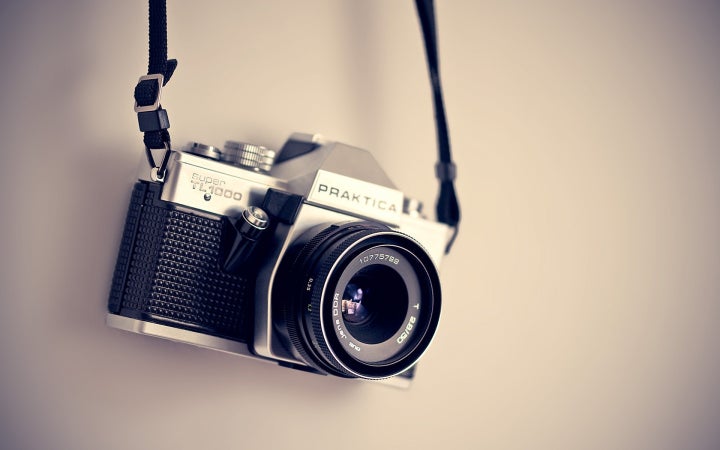
Shutter speed. Aperture. ISO. The technical aspects of my camera were confusing but, with practice, they became second nature. After a while, I wondered what my photographer identity would be. Film or digital? Weddings or portraits? Color or black and white?
In an interesting parallel process, I also was in psychiatry residency training at the time and was trying to determine what kind of psychiatrist I wanted to be. Inpatient or outpatient? Child or adult focused? Medication prescriber or therapist? CBT or psychodynamic therapy?
As my love for photography continued to grow, my discoveries during the photography journey taught me incredible amounts about myself as a person. It also, in many ways, prepared me for the therapist I would ultimately become.
You see, I conceptualize therapy, as well as photography, as a compassionate study of human beings. You must understand the person in front of you before you can make any further steps. This requires you to be inquisitive and respectful. The person in front of you must trust you before she allows you to step into her private world, where you will understand her thought processes and have the unique opportunity to learn about some of the most secretive aspects of her identity. Make a misstep, or act too hastily, and the outcome will never be as good as you had hoped.
I remember photographing a wedding. There was a lot of waiting. However, waiting was not a passive process; rather, I was constantly aware of my surroundings, holding my camera at the ready, waiting for that perfect moment to step in and photograph what would be a classic shot that could be cherished for years to come. Patience, waiting, more patience, before I quickly stepped into action. It contrasted sharply with my desire to constantly be engaged but taught me that, if chosen carefully, the image that was photographed could truly be worthwhile.
Meanwhile, in my work in psychiatry, I found myself often being verbose and conversational with my patients. We would laugh and have discussions that, ultimately, felt superficial. And then the patient would leave the session, and I would wonder what had been accomplished. In trying my best to apply my lessons learned from photography, I decided to try something new: I would try the strategy of waiting patiently until the perfect moment to step in and make a meaningful intervention. So I sat back, allowing the patients ample time and space to express themselves and allow their stories to unfold, waiting and listening carefully before I would inject my own words into the session. This was a turning point in my career: patients felt that they were truly heard. And they started to get better.
In every practice, the practitioner is always present in all aspects. As the great Ansel Adams once said, “There are always two people in every picture: the photographer and the viewer.” I discovered this first in my practice of photography and, of course, my discovery of a similar phenomenon in my therapy soon followed. When photographing, I tried to make myself as silent as possible, sitting back in the shadows and only stepping forward for a brief moment to click the button before retreating again. However, no matter how much I tried, some part of me was always present in the photos. The angle at which I tilted the camera, my views of the subject, my very essence – somehow this was all very apparent in each image, as though the image captured a part of me as much as it captured my subject.
Similarly, I tried to make myself a “blank slate” in the therapy sessions. I wore muted clothes, remained as neutral and even stoic as possible, never disclosed private details about myself. And yet, I never really was able to accomplish the non-existence sort of existence for which I strived. Instead, the color of my hair, the tone of my voice, the manner in which I positioned my seat, whether I was late in picking up the patient from the waiting room, how I started the session – these were all subtleties that would inevitably be noticed and interpreted by my patients. I decided, as with the photography, to change my stance and accept that I would clearly be a visible part of the therapy. So instead of deciding if I would be visible, I focused on what part of me should be visible. When I meet a patient, I often feel optimistic, sad, compassionate, concerned – these are all the things that are in my heart and are characteristics of myself that I felt comfortable sharing. My understanding of my presence in these sessions prepared me for the feelings I would have in disclosing to my patients later that I was pregnant, and allowed me and them to openly discuss their feelings of loss, joy, anger and sadness regarding it.
Regarding those technical aspects of my DSLR, I spent several years grappling with and frustrating myself with becoming an expert of them before finally allowing myself to refocus my learning on the artistic aspects of photography. Similarly, the training aspects of medicine and therapy are grueling. After medical school and once into psychiatry residency, one must immerse oneself in constant and heavy reading of books, long hours of formal lectures, annual exams and preparation for board exams and countless hours of mentoring. It is a privilege to have such rigorous training, but after some point, one must also discover how to develop oneself in the artistic aspects of healing in medicine and therapy. I opted to be a more collaborative physician, one who focused on wellness and on helping people who had been feeling “stuck” or dissatisfied with live find ways of moving forward.
The lessons from my photography continued throughout the years and still continue today. I discovered quickly through my photography that I was a quality over quantity type of person, and I have developed a photography practices that is small and focused. Similarly, I have developed a small private practice in North Texas, where I immerse myself in the experiences of a small number of wonderful patients and wholeheartedly dedicate myself to their wellbeing. Photography, at the very least, has been a creative outlet for me during times of stress. But the reality is that it also has been so much more. It has been an exercise in personal and professional development and has taught me immeasurable lessons in how to be a genuine, more thoughtful, more compassionate therapist.
